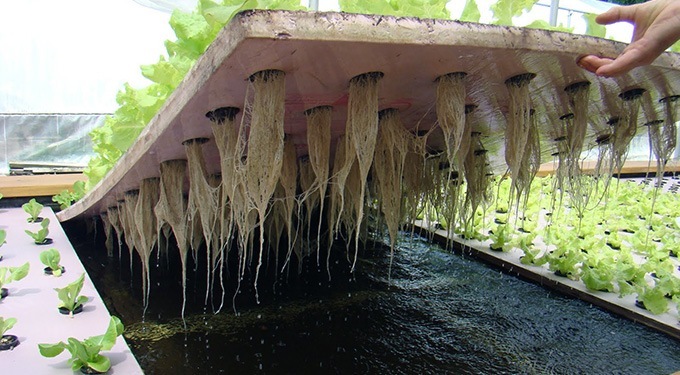
It can be easy to forget about the root systems of your plants, but with the root systems health being so vital, and the fact that healthy roots will grow vigorously throughout all stages of plant development, the root system is certainly an important factor to consider for growing healthy plants. Sometimes it can be easily overlooked, simply because the roots are hard to see inside of the growing medium, and/or might just be hard to see inside the hydroponic system or setup you’re using. But nevertheless, root disease can occur in all types of hydroponic systems and using any type of growing medium.
Healthy roots grow healthy plants and unhealthy roots can invite unwanted pests and disease that can damage your plants. Root disease is rarely due to a single pathogen, pest, or fungi. There are usually as many as three or more different disease organisms that are identified in plant samples that commercial growers submit for diagnosis from their hydroponic systems. NFT systems are typically the most common to have root diseases, although this is most likely since the roots are easier to see in this type of system which makes identifying the problem easier than it is with other types of hydroponic systems.
What to Look For
Roots of young plants and seedlings cannot be allowed to dry out. Established plants can survive for a while when they become dry, but the young plants won’t be able to survive nearly as well. A young plant’s root system should have lots of white furry root tips everywhere. A healthy mature root system will be strong and fibrous and will have a thick root mat. If the roots are creamy or yellow on top of the mat, they should still have many white root tips underneath at the bottom.
Generally healthy roots will be white in color and will grow quickly. Discoloration usually means there’s a problem. Thick, fat, white, furry roots are what you want to see and are a good sign of healthy root growth. However, the color of a nutrient solution will stain the roots, turning them yellow or brown. This is also true with many different nutrient additives so older more mature plants may have a darker cream colored root system. Some plants will just tend to have a natural color pigment to their roots.
Vigorous root growth below will always mean vigorous plant growth above. The roots act as an anchor to help support the plants and keep them stable as they grow into the growing medium. Plants in aeroponic systems will need added support because they won’t have any growing medium to help support the plant.
Root Zone Problems
Problems can arise for any number of reasons including pathogens, nutrient temperature, fungal disease, lack of air/oxygen (commonly known as over watering, or root rot) and even pests. Diseases can also be transferred into a hydroponic system from soil. If the plants are grown in soil and the roots are then washed off for transplanting into the hydroponic system, these roots can already contain the diseases and simply be transferred directly into your system.
Hydroponic systems are not completely sterile environments, even when you start with sterile growing medium, and plants started in a sterile hydroponic system. Fungi that are well adapted to living in water tend to be the cause of the most severe disease problems. Airborne spores can get into the growing media as well and with the moisture, nutrients, and roots to infect, they have what they need to spread. Many bacterial and virus diseases appear to spread well through nutrient solutions also. There are simply too many different possible infections that the roots are susceptible to, to be able to list them.
How to Protect Against Disease in a Hydroponic System
Because it’s practically impossible to maintain a sterile growing environment in any hydroponic system (except in aeroponics) it would be impossible to completely eliminate all the possible diseases the roots can get, but there are some things you can do to protect against them in the first place.
- Start with clean, disease-free water to begin with if possible.
- Start with disease free, sterile growing medium.
- Good hygiene helps control the spread of disease, as well as reducing invitations to pests.
- Sterilization of recirculating nutrient solutions. This would be hard to do for small reservoirs, but large commercial growers usually use either Ultraviolet light, or ozone treatment for their reservoirs. Smaller reservoirs can be changed, and the hydroponic system flushed.
- Use of biological controls, (also called beneficial bacteria, or microbes). Probably the most used is the “Trichoderma species.”
- Hormones and other growth promoters, some growers have gotten good results from the use of these products, even though it can be open for debate.
- Fungicides in nutrient solutions. Chemical fungicides can sometimes be recommended but will harm the beneficial microbes as well.
Jeff Sanders runs a hydroponics website call HomeHydroSystems.com to help hydroponics enthusiast learn how to build their own hydroponic systems, as well as learn about many topics related to hydroponics so they can grow to their own crops successfully.
Related Articles & Free Email Newsletter
3 Common Hydroponic System Problems and How to Fix Them
pH Testing in Hydroponics is Easy and Leads to Larger Yields




Comment here